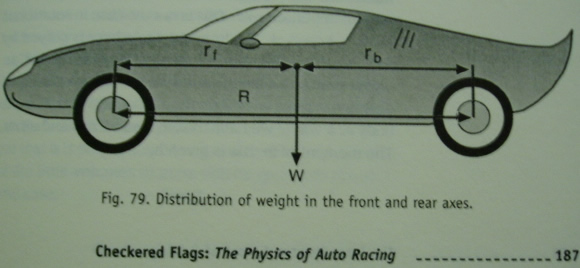The
center of gravity is very important for a car because when braking weight is transfered in the front of its center of gravity on front wheels, when accelerating the weight shifts behind on the rear wheels, and most importantly when taking a corner the weight is transfered to the outside making the inside tires loose thier contact (grip) with the ground.
In the extreme cases if you have ever seen a car or motorcycle 'pop-a-wheely' then you have witnessed the weight transfer with aceleration, if you have seen a car flip sideways in a corner, then you have witnessed cornering weight transfer. Braking transfer is a little harder to notice but it is still there, when a vehicle brakes suddenly the front end diggs in and the rear end seems to jump, it is unlikely that the rear wheels will come off the ground but it has been know to happen if the velocity is great enough..
So how can weight shift if everything in a racecar is bolted, strapped and welded down? Simply "
inertia acts through the center of gravity of the car, which is above the ground, but adhesive forces act at ground level through the tire contact ..." (Stuttgart) In effect the lower the center of gravity the better a car will handle because "... weight transfer is proportional to the height of the center of gravity off the ground." (Stuttgart)
A racecar experiences centripital force that is supposed to be coutered by the frictional force between the tires and the track to keep it from rolling.
Parker, Barry. “The Isaac Newton School of Driving.”
